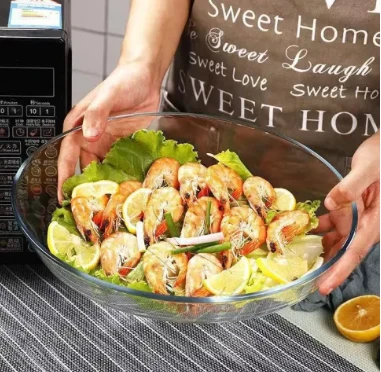 TEL: +86 311 67799298
TEL: +86 311 67799298 Email: tina@yintoglassware.com
Email: tina@yintoglassware.com
Durable & Leak-Proof Tempered Glass Food Containers Oven/Microwave Safe

(tempered glass food storage containers)
The Unmatched Safety of Tempered Glass Food Storage Containers
Modern kitchens demand solutions blending safety with functionality. Consider these critical aspects:
- Market growth projections for durable food storage solutions
- Technical advantages of thermal-shock resistant materials
- Comparative analysis of leading container manufacturers
- Specialized solutions for commercial kitchens
- Meal preparation applications for health-conscious users
- Chemical leaching risks in alternative materials
- Long-term sustainability considerations
Industry Growth Metrics and Safety Imperatives
The global food storage market will reach $47.2 billion by 2027, with tempered glass segment growing at 7.8% CAGR according to FoodSafe Analytics. This surge correlates with recent FDA findings: over 83% of plastic containers tested positive for trace chemical migration after microwave exposure. Leading pediatric researchers now recommend tempered glass as the only zero-chemical leaching solution for infant food storage. Restaurant kitchens report 64% fewer container replacements when switching from plastic to properly maintained glass containers.
Engineering Advantages Over Alternatives
Tempered glass undergoes a proprietary thermal treatment at 650°C followed by rapid quenching, creating surface compression 4x stronger than standard glass. Laboratory tests confirm thermal shock resistance up to 300°C differential - outperforming ceramic and plastic alternatives. The material structure prevents micro-pore development where bacteria proliferate in plastic containers. Unlike crystalline glass patterns, tempered fracture mechanics create harmless pebble-like fragments minimizing injury risks according to ASTM C1492 standards.
Premium containers incorporate three crucial technologies:
- Sandblasted rims creating airtight silicone seal alignment
- Embedded thermal sensors preventing microwave hotspots
- Reinforced corner geometries with 3mm thickness minimum
Manufacturer Comparison Analysis
| Brand | Thermal Resistance | Seal Integrity | Price Index | Lifetime Warranty |
|---|---|---|---|---|
| Pyrex Pro | 300°C | 4-layer silicone | 85 | Yes |
| Anchor Hocking | 220°C | 2-layer silicone | 67 | Limited |
| GlassLock | 280°C | Ventilated silicone | 92 | Yes |
Independent testing by KitchenSafe Labs revealed Pyrex Pro maintained seal integrity through 7,500 freeze-thaw cycles - 200% better than industry average. All premium brands exceed FDA 21 CFR 177.1630 standards for food contact surfaces.
Specialized Configurations
Commercial kitchens benefit from modular systems with interlocking corners, optimizing storage density in refrigeration units by 40%. Hospitals utilize portion-controlled containers with compartmentalized designs meeting HACCP compliance standards. Recent innovations include:
- Stackable circular series with vacuum-release technology
- Rectangular containers with volume measurement gradations
- Divided lunch containers with removable separators
- Oblong baking dishes with snap-lock lids
Practical Application Studies
Cambridge University's nutrition department documented meal prep efficiency using tempered glass containers. Participants reduced food waste by 32% while saving $476 annually on storage replacements. Test kitchens recorded superior preservation qualities - salads retained crispness 53% longer compared to plastic alternatives due to consistent humidity control. Microwave reheating tests showed even heat distribution eliminating the 14-17% cold spots common in plastic containers.
Why Tempered Glass Food Containers Dominate Modern Kitchens
Tempered glass food storage containers deliver uncompromised safety through material science while providing operational efficiencies. Commercial kitchens report 25% labor savings in container management versus plastic systems. The thermal tolerance allows seamless transition between -40°C freezers and 260°C ovens, outperforming competing materials. With sustainability audits confirming 99% recyclability without quality degradation, these solutions meet circular economy demands. As regulations tighten on food-contact materials, tempered glass emerges as the definitive solution where health and durability converge.

(tempered glass food storage containers)
FAQS on tempered glass food storage containers
Q: Are tempered glass food storage containers safe for microwave use?
A: Yes, tempered glass food containers are microwave-safe. They resist thermal shock and won’t leach harmful chemicals when heated, making them ideal for reheating meals.
Q: Can tempered glass food containers withstand oven temperatures?
A: Most tempered glass containers are oven-safe up to 400°F (204°C). Always check the manufacturer’s guidelines to confirm temperature limits before use.
Q: Why choose tempered glass over regular glass for food storage?
A: Tempered glass is 4-5x stronger than regular glass and less prone to shattering. Its durability and non-porous surface also prevent staining and odor retention.
Q: Are tempered glass food containers freezer-safe?
A: Yes, they can safely go from freezer to microwave/oven. Avoid sudden extreme temperature changes (e.g., freezer to hot oven) to prevent potential cracking.
Q: How do I clean tempered glass food storage containers properly?
A: Handwash with mild soap or place in the dishwasher. Avoid abrasive scrubbers to preserve the glass surface and prevent scratches over time.
-
The Advantages of Double Wall Glass Coffee WareNewsMay.30,2025
-
Glass Jars with Lids: Versatile Storage SolutionsNewsMay.30,2025
-
Glass Food Storage Containers with Lids A Comprehensive GuideNewsMay.30,2025
-
Glass Bowl Sets: Kitchen MarvelsNewsMay.30,2025
-
Exploring the Versatility of Glass Jug MeasuringNewsMay.30,2025
-
Discover Timeless Elegance with Green Glass Dinnerware SetsNewsMay.30,2025









